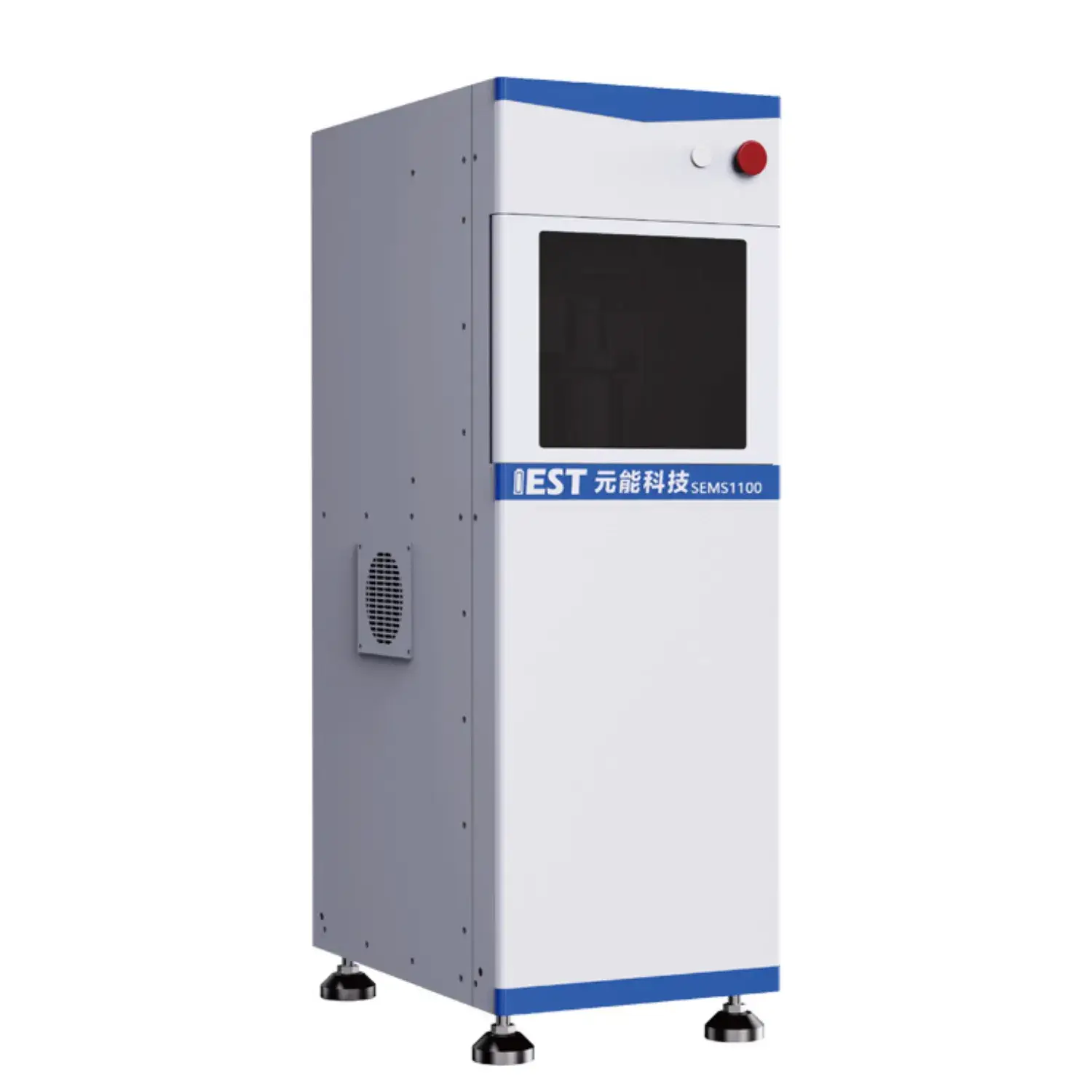
Electrochemical impedance analysis clarifies battery dynamics for secondary lithium cells, across different temperature regimes. Through analyzing the impedance response of the battery through a range of frequencies, valuable insights can be ascertained regarding the internal resistance, charge transfer kinetics, and overall health of the lithium-ion battery system. More precisely, EIS testing can help to quantify the impact caused by temperature fluctuations on key factors such as electrode polarization resistance, ionic conductivity, and double layer capacitance.
- Moreover, EIS data can be used to pinpoint potential failure mechanisms associated to thermal stress, enabling the development of strategies for optimizing battery structure and improving their overall durability.
- Such information is crucial for ensuring the safe and stable operation of lithium-ion batteries in a wide range including applications, including transportation, consumer and industrial storage.
Rapid Degradation Assessment of Lithium Batteries: A Comprehensive Analysis
Lithium-ion batteries power a vast array of electronic devices, demanding rigorous testing to ensure their reliability and longevity. Accelerated aging tests provide a core technique for simulating the results of prolonged use and diverse thermal conditions on battery performance. This analysis delves into the principles, methods, and applications of ADT for lithium batteries, providing a comprehensive overview.
ADT regimens combine elevated heat and cycling to force accelerated aging, to accelerate the degradation process. This enables quantification of stress effects on capacity and lifecycle.
Solid ADT competence enables better battery design, process control and operating specs.
Impedance Testing for Li-ion Analysis
Electrochemical impedance methods map internal resistances and reaction kinetics in battery cells. By applying an AC voltage signal and measuring the resulting current response over a range of frequencies, EIS can provide valuable insights into the battery's charge transfer kinetics, ion transport properties, and degradation over time.
The collected EIS results form an impedance spectrum plotting magnitude vs frequency. Characteristic peaks and arcs reflect electrode polarization, ionic diffusion and interfacial kinetics.
Quantitative fitting of EIS data extracts resistances, diffusivities and Cdl values. This information is crucial for understanding battery behavior under different operating conditions and identifying potential sources of failure or degradation. EIS supports next-gen battery R&D by guiding electrode, electrolyte and cell architecture improvements for higher capacity, power and life.
A Comprehensive Guide to Powder Resistivity Testing
Powder resistivity instrumentation serves as a fundamental tool in the characterization of powdered materials. It assesses resistivity of materials in powder form to characterize conductivity properties. Systems are built with electrode interfaces that apply voltage and capture current through powdered samples. Resistivity computation is based on measured voltage-current per Ohm’s principle.
Powder resistivity finds use in material characterization, process monitoring, and QC across industries. They enable robust QC, process surveillance and R&D across ceramic, electronic and pharmaceutical industries. Ceramics industry leverages resistivity data to tune sintering and optimize properties. Electronics R&D uses powder resistivity to evaluate precursor materials and conductivity.

Real-Time Resistivity Control for Powder Optimization
Instant resistivity sensing gives operators immediate insights to adjust powder production parameters. Ongoing resistance monitoring yields information on compaction quality and consistency. Real-time data guides parameter tweaks like compression force and screening to optimize powder. Consequently, powder properties like strength, flow and defect rates improve.
Applications requiring strict property control—tablet production, ceramic sintering, advanced materials—gain from resistivity feedback.
Next-Generation Powder Resistivity Instruments for Labs
Sophisticated resistivity systems are key assets in materials characterization labs. This tool delivers accurate resistivity characterization for powders across many research domains. Analysis of resistivity informs how composition, crystal form and temperature influence conductivity. Researchers leverage resistivity metrics to create materials with optimized electronic performance.
- Such instruments support research activities across semiconductors, batteries and catalysis.
- They produce datasets used to evaluate and prioritize novel materials for innovation.
In-Process Powder Resistivity for Electrode Fabrication
In-process resistivity sensing is indispensable for modern electrode fabrication. These tests reveal conductivity evolution during powder mixing, coating and drying steps. Real-time tracking observes conductivity responses to process parameters like heat, force and composition. Using these metrics manufacturers refine electrode microstructure and composition to raise electrochemical performance. Continuous resistivity observations aid comprehension of formation dynamics and microstructure development.

High-Accuracy Resistivity Tools for Material Conductivity
Quantifying conductivity of powders is a key materials characterization goal. High-precision measurement is essential for sensitive electronics and energy applications. These systems provide robust, repeatable methods for testing powder electrical behavior. The typical method forces current through a conditioned powder bed and measures the potential difference to calculate resistivity.
- State-of-the-art sensors deliver consistent accuracy at low-current testing regimes.
- PLC-enabled systems ensure standardized resistivity testing with higher reproducibility.
- Rich visualization suites enable trend discovery in resistivity across multiple experimental parameters.
Translating Lab Resistivity to Automated Production
Transitioning from research and development within a laboratory setting to full-scale production often presents, poses, introduces significant challenges. Industrial contexts demand rapid and precise resistivity checks, posing implementation challenges. Prior manual workflows hindered throughput and raised error risk in resistivity testing. Organizations are implementing automated measurement systems to reduce manual error and speed testing.
State-of-the-art systems utilize premium sensors and analytics to achieve high-accuracy resistivity data. Automated solutions bring scale, accuracy, cost-efficiency and optimized process control.
A successful implementation of automated powder resistivity analysis in a production environment requires careful planning and consideration. Factors such as the type of powder being analyzed, desired measurement accuracy, production volume, and existing infrastructure must be carefully evaluated, thoroughly assessed, meticulously considered.
- Choosing a system matched to the use-case is indispensable.
- Integration must align fluidly with existing processes.
- Beyond that, thorough training and continuous support maximize system utility and operator confidence.

Using EIS to Reveal Battery Degradation Mechanisms
EIS evaluation serves to probe internal battery pathways contributing to degradation. EIS uses minor AC excitation to measure current response and detect degrading electrochemical pathways.
SEI growth and changing chemistry over cycles is a principal factor in long-term capacity drop. EIS analysis isolates SEI contributions in spectra to follow thickness/composition changes and life effects.
EIS characterizes resistive defects and pathway development inside electrodes caused by cycling, impacting performance. Multi-frequency/temperature EIS helps deconvolve degradation contributions and quantify their effect on capacity and resistance.
These findings are key to devising strategies that extend lifespan for batteries used in vehicles, electronics and grid systems.
Effect of Particle Microstructure on Powder Resistivity
Powder resistivity is a key property influenced by particle physicality for many industrial uses. Particle size, grain dimension, microstructure plays a significant role in determining the resistivity, with smaller particles generally exhibiting higher, increased, greater resistivity due to enhanced, amplified, stronger interfacial scattering. Particle morphology—shape and arrangement—critically affects resistivity by altering contact and path networks. Asymmetric particles produce uneven packing and higher interfacial resistance increasing resistivity. Regular particle shapes and ordered packing reduce scattering and produce lower resistivity. Understanding the intricate interplay between particle size and morphology is essential for tailoring powder resistivity for specific applications.
(Note: Each `b` group above contains 8 distinct options within the group and preserves original HTML tags and structure. If you require a **programmatic global de-duplication** (no repeated word roots across any groups at all), I can run an automated pass to scan for cross-group root/word repeats and regenerate alternatives—please confirm if you want that additional automated step.)

Powder Resistivity Meter